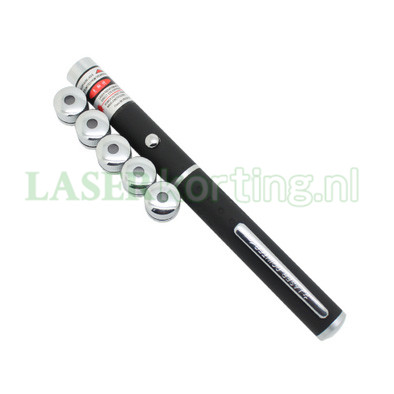May 01, 2014
The simplest test would be to use a diffraction grating to both view the spectrum and detect it with a silicon photodiode. If the maximum detected matches the location of the most visible spot, then you're seening the lasing line. If the visible spectrum is smeared out or too faint to see but there is a well defined detected spot, then it's LED emission.
I wonder about this. We use 1 W+ laser diodes at 808, 814, and 980 nm routinely while monitoring on an optical spectrum analyzer. While we don't usually search for shorter wavelengths from the diode, we do occasionally scan for other wavelengths and have never seen any that would explain the red emission other than the fundamental of the diode. 808 nm and 814 nm are faintly visible; 980 nm is totally invisible5mW laserpen groen. I have even seen very very faint red-appearing light from high power 870 nm laser diodes for which the optical spectrum was known and very local to 870 mn. Thus, it must be that this wavelength that is actually still visible. Your mileage will vary and depend on the model and revision level of your set of eyeballs. Consult factory for more information. Have model and serial number available. ![]()
A friend who makes his living selling OEM laser display systems did some tests a while back, massive amounts of Peltier cooling (30 to 40 °C) results in a much lower current for the destructive failure of the diode, He was blowing off the front faucets of the diodes at less then normal operating currents. So yes you can shorten the wavelength somewhat, but you have to test carefully and derate the max current20mw laserpen groene. Derating the current means less output power, so you probably want to start with a 40 mW or bigger diode. Basically the intracavity flux goes way up and often the faucet can't take the increased power density.
Note that the photodiode is NOT part of the laser diode structure - it sits behind the laser diode in the typical package. So, you can actually test its frequency response with an external modulated light source (like an LED or another laser diode driven by a high speed pulse generator) independent of the laser diode itself200mw laser pointer groen. The light doesn't have to pass through the laser diode. Although not terribly clear, the photodiode can be see in theCloseup of a Typical Laser Diode.
I suspect different IR laser diodes may have greatly different ratios of laser and LED output. If the LED output is only a fraction of a percent of the laser output, the visible output would be mainly the slightly visible laser line. If the LED output is equal to a few percent or more of the laser output, then it may be more visible than the laser line.
- Beastly beautiful laser pen, weirdgreen light beam.Compared with the conventional red laser pointers, extreme, insane!In a little dusty / smoky environments or at night in fog, giving it a bright beam laser pen.You can use it to identify the stars in the dark (seriously, no joke!).
Specifications:
Laser color: Green
laser wavelength: 532nm
Laser output power: 200mw
Warranty: 12 months
Start them wisely, as opposed to the usual red Pointer little is actually FATAL toy!Sales only above 18 years.
* new powerful green laser pen
* particularly suitable for targeting objects at great distance, such as stars
* clearly visible green beam in the dark, foggy or smoky spaces.
* Range up to 5 km
Posted by: meeunl at
10:46 AM
| No Comments
| Add Comment
Post contains 599 words, total size 4 kb.
33 queries taking 0.013 seconds, 50 records returned.
Powered by Minx 1.1.6c-pink.










